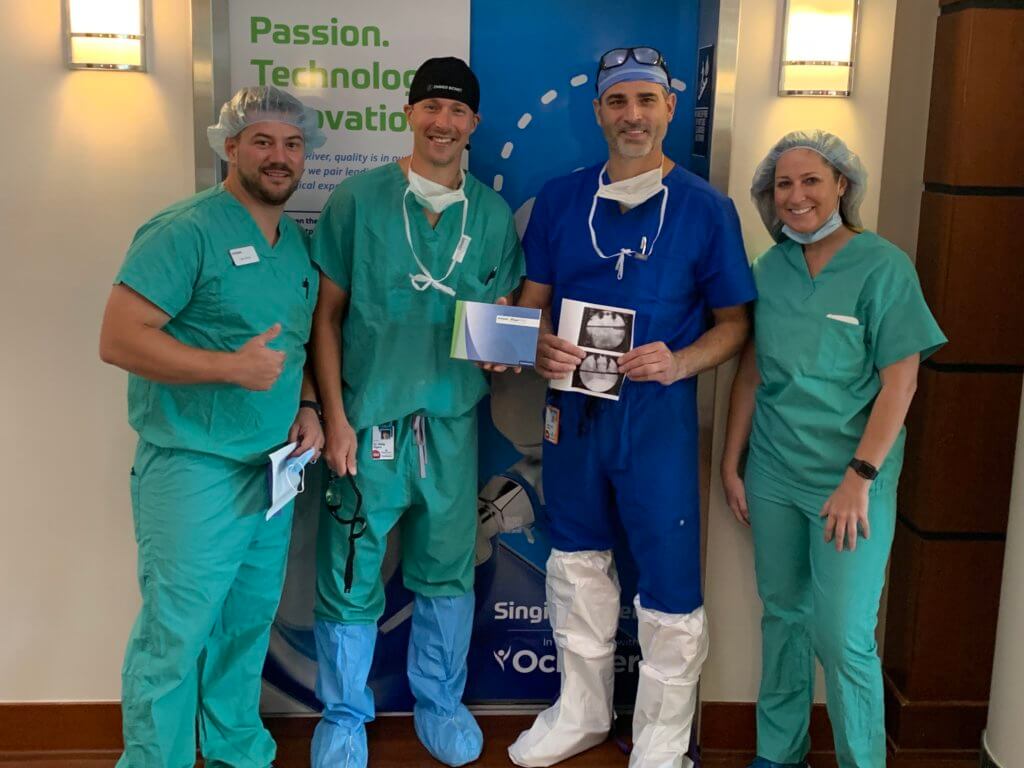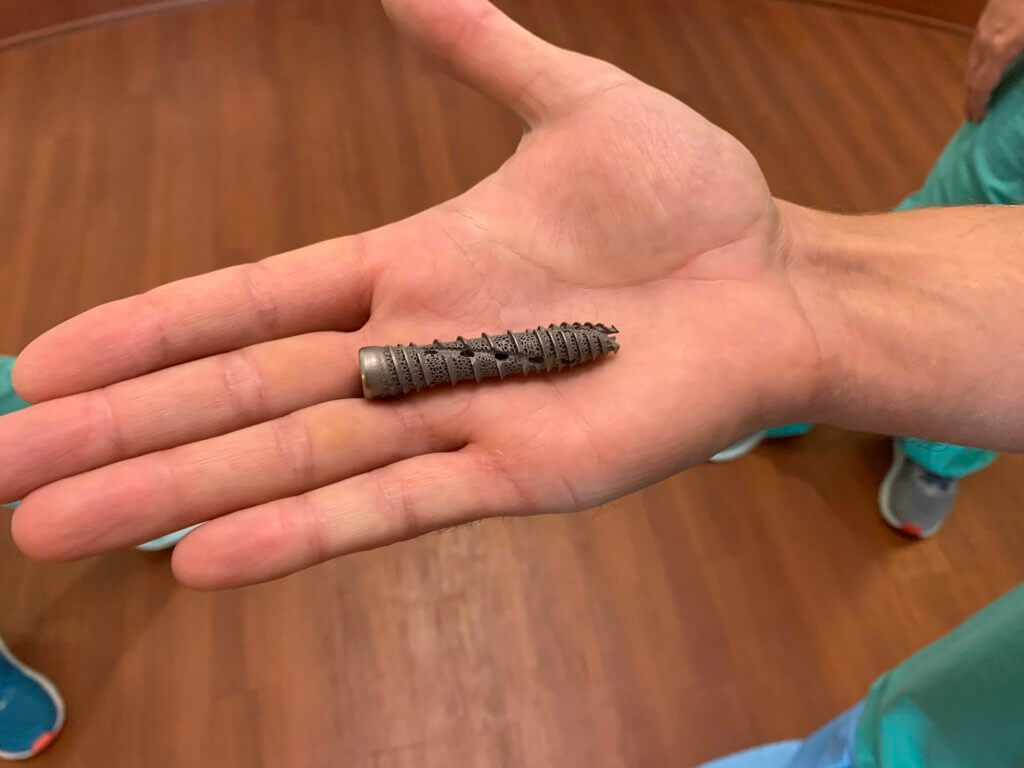Singing River Orthopedics First to Perform iFuse TORQ Procedure in Mississippi – providing better outcomes for those with Pelvic Trauma/Hip Fractures

Singing River Orthopedics team Dr. Philip Myers and Jay Smith, NP performed the first iFuse TORQ hip fusion surgery in Mississippi on September 23, 2021, demonstrating their commitment to staying on the cutting-edge of treatment options for their patients.
The iFuse TORQ technology uses specially-designed, 3D printed implants that are placed via a minimally-invasive procedure to stabilize complex hip fractures, in this case, fusing the hip joint to the spine.
This advanced technology and technique have proven successful in producing better long-term outcomes for hip fracture patients and improved quality of life when many other treatments and surgical options have proven unsuccessful.
The iFuse Implant System®
The iFuse Implant, available since 2009, is a small, triangle-shaped medical device designed to stabilize and fuse the sacroiliac joint. It’s minimally invasive and clinically proven to improve pain, function, and quality of life for people who have been diagnosed with sacroiliac joint dysfunction due to degeneration or disruption.
iFuse Surgical Technique
The possible benefits of the iFuse minimally invasive surgical procedure are:
- Minimally invasive surgical (MIS) approach can be done through a small one to two inch incision
- Minimal blood loss
- Triangular implant profile minimizes joint movement and rotation
- Designed using standard orthopedic “pin, drill, broach” surgical site preparation
- An interference fit between the implant and the adjacent osseous walls provides immediate stabilization
- Porous surface provides favorable environment for bony ongrowth and ingrowth
- iFuse shape and surface are well suited for sacral bone
- Rigid titanium construction and implant geometry designed to stabilize and fuse the heavily loaded SI joint
The iFuse Implant System consists of cannulated triangular, titanium (Ti 6Al4V ELI) implants with a porous surface and an instrument system. Implant surface and shape are designed to prevent rotation and motion of the sacroiliac (SI) joint. The instrument system uses guide pins for accurate placement.

Benefits of Minimally Invasive Surgery (MIS) over Traditional Surgery
Clinical publications demonstrate that the iFuse minimally invasive procedure results in fewer complications than traditional open surgery. There is many potential benefits of iFuse minimally invasive surgical (MIS) technique over traditional surgical SI joint fixation, including:
- Smaller incision size
- Less soft tissue stripping
- Minimal tendon irritation
About the SI- BONE iFuse-TORQ Implant System for Pelvic Trauma:
SI-BONE has been an innovator in the surgical treatment of sacropelvic disorders since 2008 when it introduced the iFuse Implant System® for minimally invasive SI joint fusion. The iFuse Implant System utilizes unique, patented triangular-shaped titanium implants designed to stabilize and fuse the SI joint. Today, over 300 million Americans have access to the iFuse procedure via favorable coverage policies from their health plans. In April 2021, SI-BONE expanded its innovative sacropelvic treatment offerings with the launch of iFuse-TORQ, a novel 3D-printed threaded implant. iFuse-TORQ is designed with advanced features for increased functional surface area, bone harvesting, and rotational resistance vs conventional screws for SI joint fusion and trauma. iFuse-TORQ now allows surgeons to perform pelvic fracture fixation and SI joint fusion with one device.

